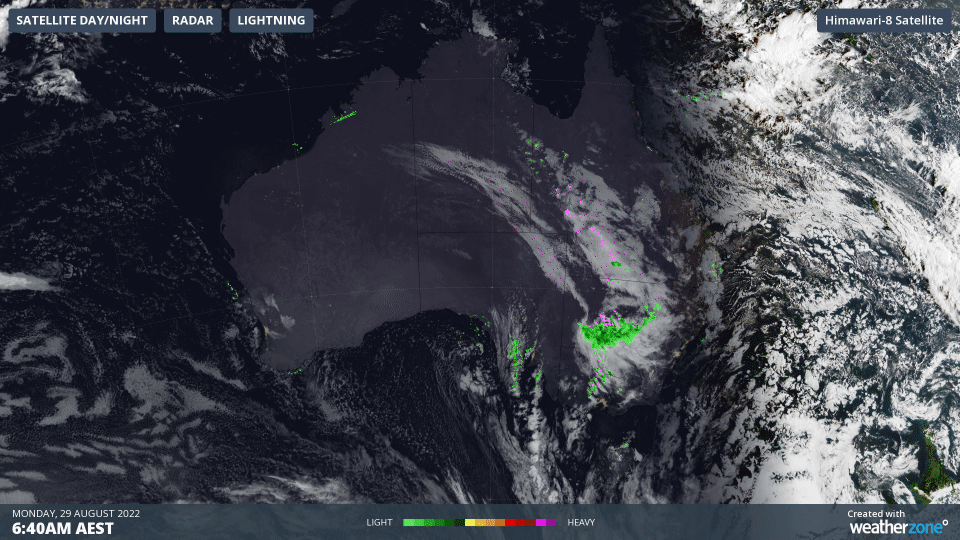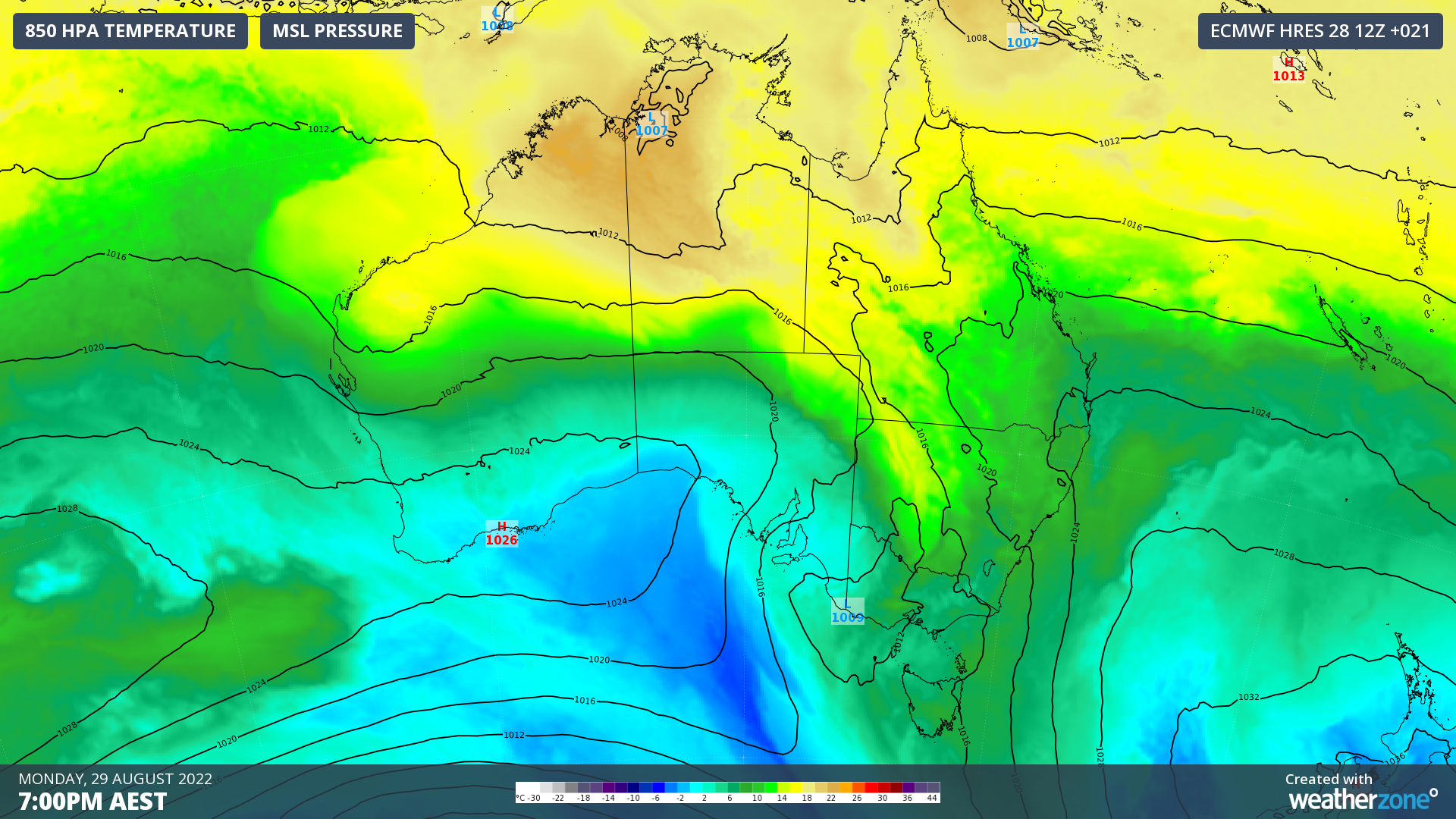3000 km of thunderstorms hitting Australia today
A late-winter thunderstorm outbreak is unfolding across eastern and southeastern Australia today, with severe thunderstorms likely in several states.
As the sun rose on Monday morning, thunderstorms were stretching from the eastern inland of the NT down to western VIC, spanning close to 3000 km in distance.

This morning’s thunderstorms were unusually active for a late-winter's morning in Australia, with large thunderstorm outbreaks like this more commonly occurring in the afternoon during spring or summer.
Monday’s storms are being caused by a broad low pressure trough and cold front interacting with moisture-laden air and an unstable atmosphere. This instability is being enhanced by a large temperature contrast between an unseasonably warm air mass over the Australian continent encountering a much colder pool of air travelling up from the Southern Ocean.

Image: Air temperature at around 1.5 km elevation and mean sea level pressure at 7pm AEST on Monday, August 29, according to the ECMWF model.
Rain and thunderstorms will continue to spread over eastern and southeastern Australia on Monday afternoon and evening, likely affecting parts of the NT, QLD, NSW, the ACT, VIC, SA and TAS. This rain may lead to flooding in some areas, with a Flood Watch issued in parts of VIC late on Monday morning.
Some of Monday’s storms could produce damaging winds, large hail and heavy rain, most likely in a corridor extending from southwest QLD, down through far western NSW and into western VIC. A few supercell thunderstorms could also develop in western NSW from Monday afternoon, possibly causing destructive winds and giant hail.
While the most intense thunderstorms are likely to occur on Monday afternoon and early evening, some storm activity will linger overnight and continue on Tuesday in parts of the NT, QLD, NSW and VIC.

Image: Forecast accumulated rain during the 48 hours ending at 10pm AEST on Tuesday, August 30, showing the areas that are likely to receive rainfall from this system.
Severe thunderstorm warnings will be issued and updated as storms develop over the next 12 to 24 hours.